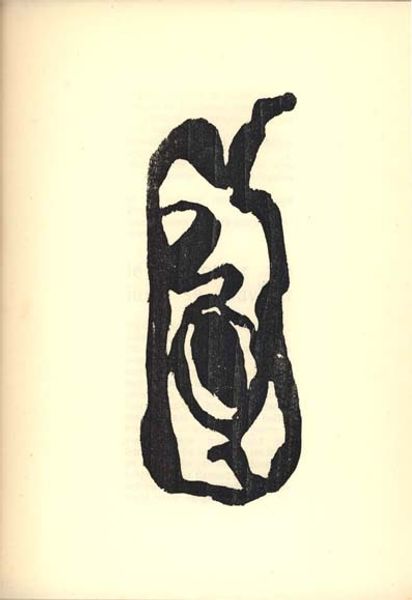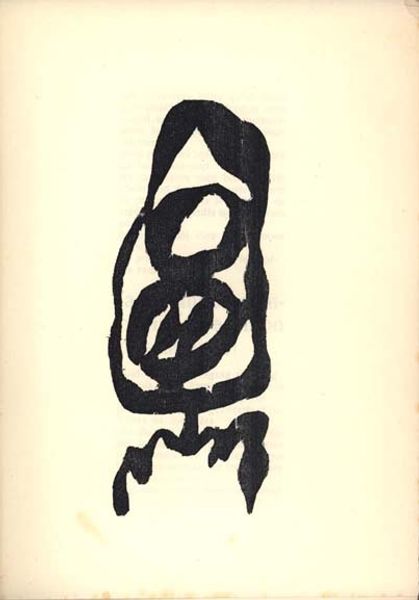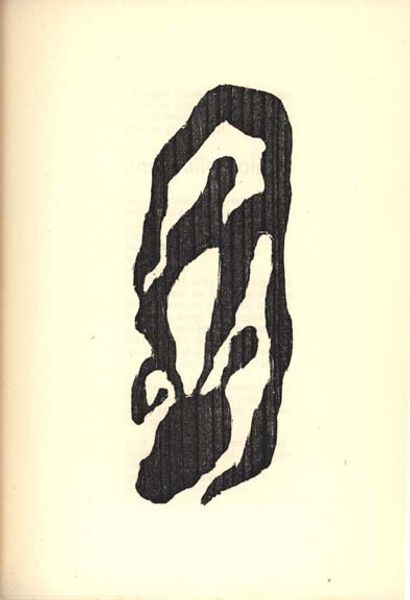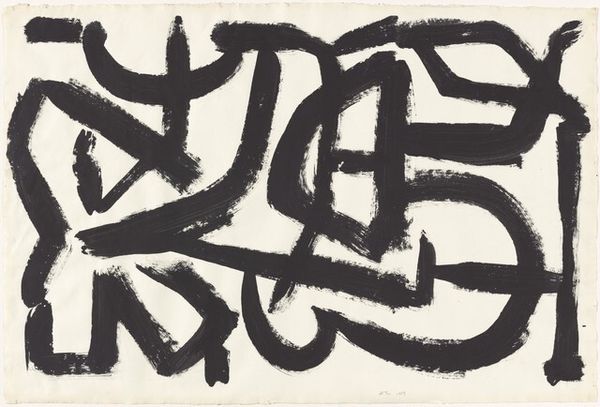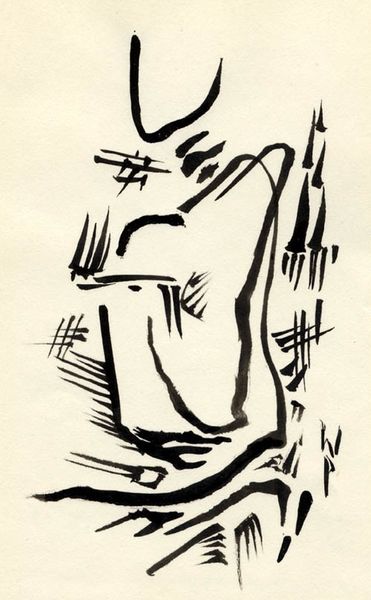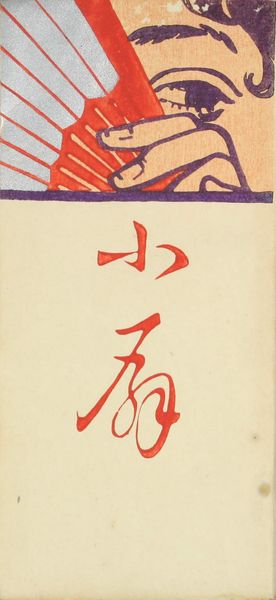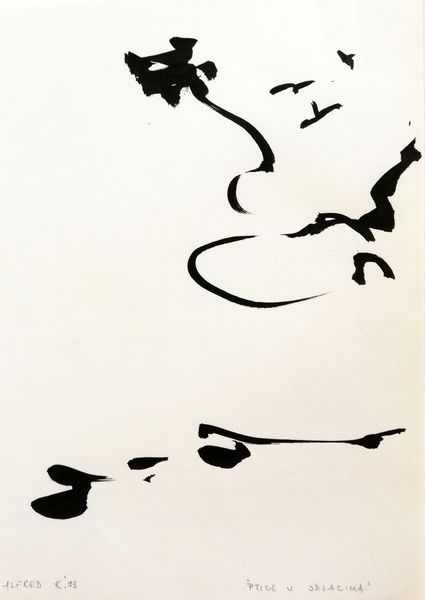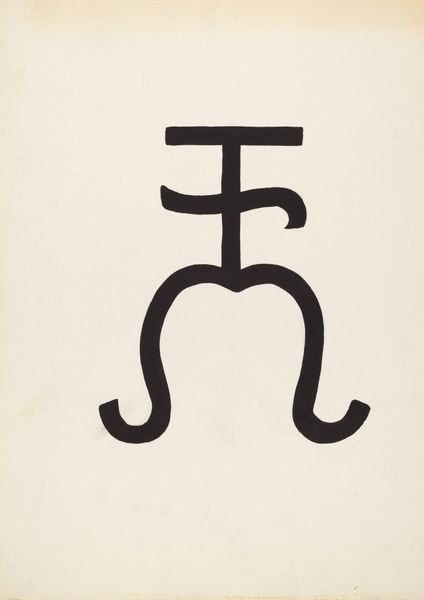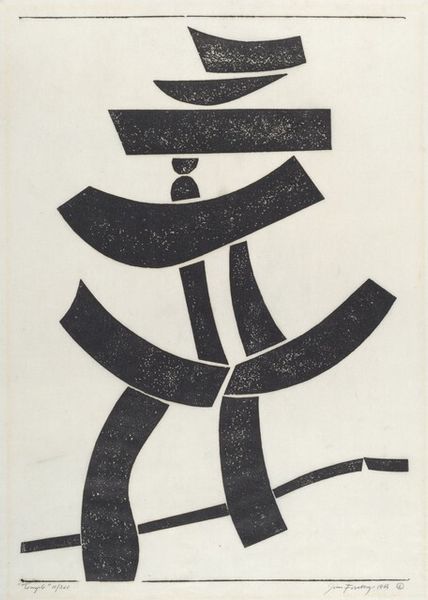
drawing, graphic-art, ink
#
drawing
#
graphic-art
#
cubism
#
script typography
#
hand-lettering
#
playful lettering
#
old engraving style
#
hand drawn type
#
hand lettering
#
ink
#
hand-drawn typeface
#
dada
#
geometric
#
pen-ink sketch
#
abstraction
#
pen work
#
sketchbook drawing
Copyright: Public domain US
Curator: This is a striking piece by Jean Arp, an illustration rendered in ink for Tristan Tzara's "Vingt-cinq poèmes" dating to 1918. What are your first thoughts? Editor: Immediately, it feels chaotic and playful, in a visually disruptive way. The contrast is stark, a heavy black form against the white page, almost like something struggling to come into focus. It reminds me of some radical poetry performances where they tried to shake up conventional expression and meaning-making, how do you see that in relation to symbols or signs? Curator: That's interesting, that sense of something in transition; it certainly speaks to the moment it was created, at the close of the Great War, a hinge for the artistic avant-garde. As an iconographer, I look for the endurance of meaning within abstraction, but this challenges established structures, especially given Arp's association with the Dada movement. I wonder if we can see hints of a language refusing to solidify? The lines do have the semblance of writing, after all. Editor: Yes, a kind of anti-language perhaps, very intentional for an artist embedded in a specific social and political reality. Looking at its broader context, it's worth noting that the Dadaists were actively trying to undermine societal norms following the trauma of the First World War. They wanted to dismantle structures of thought that had led to such devastation, even through works that seem visually whimsical like this one, even beautiful perhaps. It embodies the search for meaning in something which seems absurd. Curator: I agree. There's a rejection of clear symbolic meaning—it's less about representing the world than responding to it. Yet the consistent use of line also calls up older forms of script or religious manuscript, almost parodying tradition, wouldn’t you say? It offers us both visual destruction and an enduring echo of past symbols. Editor: Precisely, that echo is important. It suggests a continuum and that art, even when rejecting norms, is always in conversation with the historical record. Ultimately, the graphic stands in resistance against established modes of understanding and knowing, suggesting that everything that came before may need dismantling to rebuild. Curator: Absolutely. Arp's work, especially within its Dadaist context, invites us to consider the complex interplay between form and meaning and its radical political possibilities. Thank you for shining light on these points. Editor: It was a pleasure. The piece resonates on many levels, it shows us the artistic resistance of its moment as a powerful echo today, proving there are many ways of dismantling symbols of past structures.
Comments
No comments
Be the first to comment and join the conversation on the ultimate creative platform.

